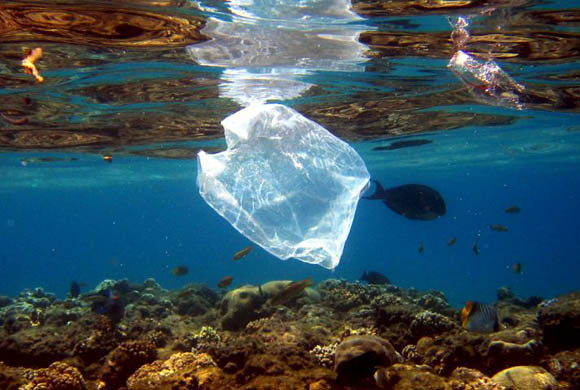By Lana Gulden
Although many are aware of the existential threat that climate change presents, there are numerous other life threatening environmental problems we face. The use of plastics, particularly single use plastics, presents to us and the life around us one such threat. In the United States, people use 100 billion plastic bags every year, each with an average usable life of 15 minutes and 500+ years to degrade. If each plastic bag costs one cent, that is a cost of $1 billion a year for merchants. Plastic bags are not biodegradable and only 1% are sent to recycling centers. The other 99% end up in landfills or litter our environment, including the waterways and oceans. Plastics in the environment are often mistaken for food, especially by marine animals and sea birds. This results in harmful effects on 700 marine species and the painful unnecessary deaths of 100,000 marine mammals. During a recent beach clean up, volunteers removed 24 million pounds of plastic. Still, sea birds are found on remote islands with stomachs filled with plastic.

Photo by Flicker user Bag Monster
Of the millions of bags collected with the trash, many become airborne and collect in trees, fences and roadways near landfills. As they degrade, toxins are released into the air, water, and soils. By leaching into the soil they eventually enter our food chain. Two of these chemical compounds, Phthalates and BPA, are suspected to cause insulin resistance, respiratory problems, and high blood pressure in children. The end life of the environmental scourge that plastics presents is only one part of the plastic problem. The manufacture of plastics, including plastic bags, requires 60-100 million barrels of oil. The process begins in an ethane cracker plant. This manufacturing process releases toxic chemicals such as neurotoxins, carcinogens, and hormone disrupters, which put workers and nearby communities at greater risk for cancer, neurological problems, cardiovascular problems, respiratory disease, birth defects, and asthma attacks. Of all industries, plastic manufacturing contributes the largest amount of greenhouse gasses.
We were able to function without plastic bags until 50 years ago and we can do it again. Fortunately, 127 countries worldwide have either banned or are phasing out the use of plastic bags. In the US, 200 counties and municipalities have either banned or implemented a fee on their use. Philadelphia passed an anemic plastic bag ban in late 2019, and efforts are underway to improve it. California, Hawaii, the US Virgin Islands, and now New York have enacted statewide bans. While these entities have acted to protect the environment, 10 states have passed preemptive legislation to prohibit the banning of plastic bags. Here in Pennsylvania, the Independent Fiscal office is accepting comments on whether or not to allow municipalities to ban plastic bags. Comments should be sent by email to the IFO at: contact@ifo.state.pa.us by March 31.
A plastic bag ban can reduce costs to municipalities, including less storm drain blockage, fewer bags in streams and rivers and less waste sent to landfills. Seattle banned plastic bags and the amount of bags in landfills dropped from 262 tons to 136
tons. Roadside litter costs Pennsylvanians $14 million a year to clean up. Cigarette butts and plastic make up most of that litter. A statewide plastic bag ban would be beneficial both financially and health-wise. See sierraclub.org/plastic.
Lana Gulden has been a member of the Sierra Club Otzinachson Group for many years and has served on the Executive Committee for twelve years. The Otzinachson Group is presently leading a group committed to banning plastic bags and finding alternatives for other single use plastics.